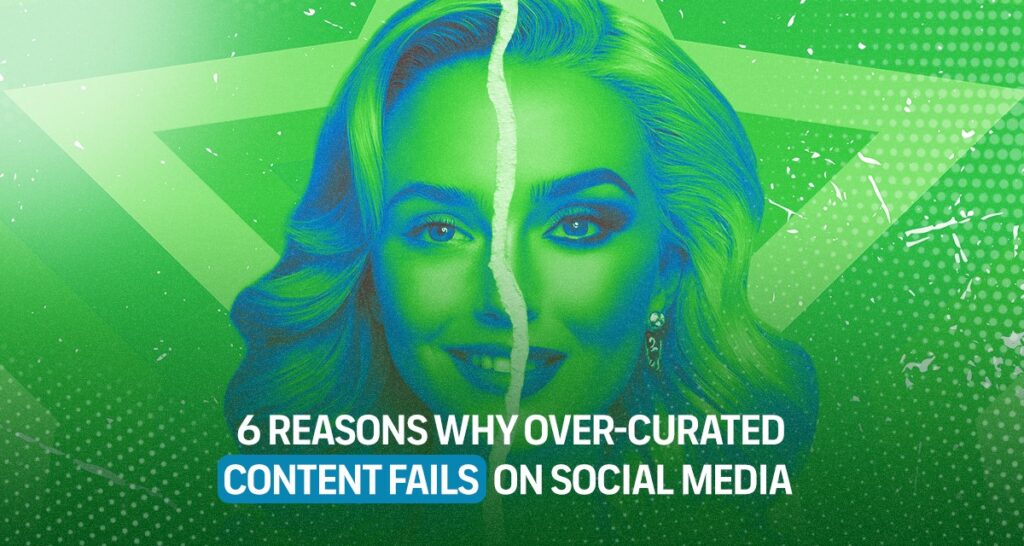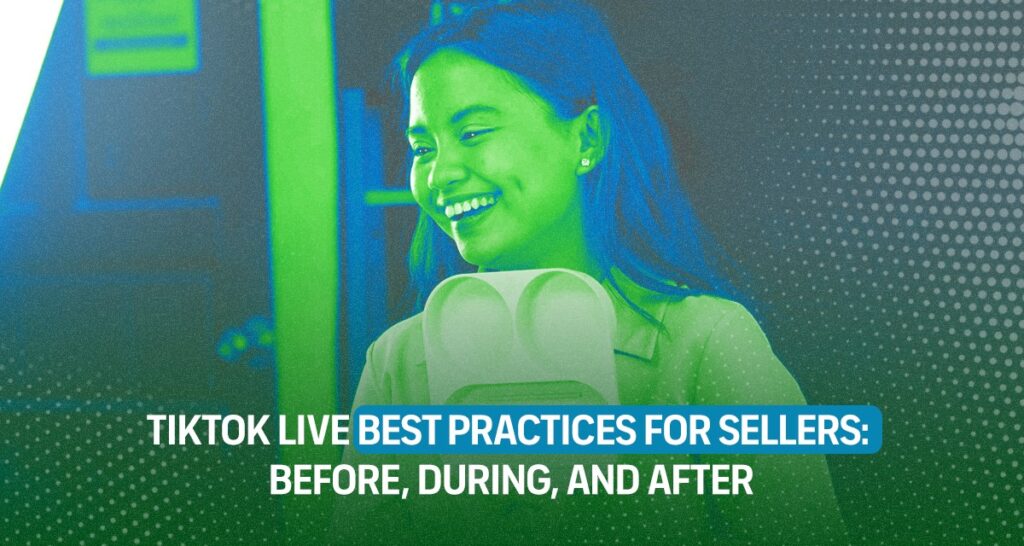For years, meticulously polished content was the gold standard in social media marketing. Over-curated posts were seen as the key to building a credible brand, and many believed this tight control guaranteed success. But times have changed.
If you’re active in today’s digital landscape, you know strategies evolve rapidly. And unfortunately, over-curated social media content is one of those strategies that have become outdated.
In fact, according to Everything PR, even influencer marketing, once a dominant social media strategy, is now seeing diminishing returns due to over-curated and inauthentic collaborations.
So, are you over-curating your social media posts right now and slowly driving your audience away?
In this article, we will detail why this approach undermines content authenticity, reduces meaningful engagement, and ultimately sabotages your social media marketing goals today.
What is Over-Curated Content Anyway?
In a nutshell, over-curated content refers to social media posts that are overly polished, meticulously planned, and heavily edited, to the point that they feel staged, artificial, or out of touch. This kind of content prioritizes perfect aesthetics above all else.
You’ve definitely scrolled past it! For example, an Instagram feed of identically filtered photos. Then there are product photos and lifestyle shots processed to fit a rigid, often unrealistic, aesthetic standard.
But it’s not just in images; this practice is rampant in videos and influencer content too. You’ll see video clips that feel clearly rehearsed, or an influencer video that comes across more like a scripted ad than a genuine, personal take.
There are also over-curated captions. These are brand posts with fancy words that read beautifully but lack any real human voice or truly engaging message.
These are all prime examples of content that has been over-curated, stripping away its raw, relatable quality.
While polish and consistency still matter, the real problem emerges when this visual perfection outweighs human connection.
Over time, relying on or posting over-curated content significantly impacts your brand’s authenticity online.
Content Curation vs Over-Curated Content

Alright, before we dive into the downsides of over-curated content, we need to address something crucial. There’s a big elephant in the room: content curation is NOT the same practice as over-curated content.
The confusion often comes from how similar the terms sound, but let’s be clear: they are two entirely distinct concepts and practices in the world of social media. This isn’t just semantics; it’s a fundamental difference.
According to Sprout Social, content curation is “the act of finding and sharing excellent, relevant content to your online followers.” Here, you’re using trusted, third-party sources to keep up with your audience’s growing demands for information and entertainment. It’s about providing value by sharing existing great stuff.
Meanwhile, over-curated content is not about the act of curation itself—it is the result of taking curation too far.
As we have discussed, over-curated content feels too polished or staged. Every post looks perfect, every caption sounds scripted, and the overall feed loses its human touch.
To discuss this further, let’s look at the key differences between these two terms in the table below:
Comparison Points
Content Curation
Over-Curated Content
- Definition
Sharing relevant third-party content with your audience.
Creating overly polished and staged content lacking authenticity.
- Purpose
To provide value and maintain engagement.
Often aimed at portraying perfection, which can backfire.
- Audience Perception
Seen as informative and helpful.
May be perceived as inauthentic or disconnected.
- Impact on Engagement
Can boost engagement by offering diverse perspectives.
May lead to decreased engagement due to a lack of relatability.
Content curation can be an effective social media marketing strategy. Keep in mind, however, that relying too much on it can do more harm than good, as your audience may then see your brand as lacking originality.
6 Reasons to Avoid Over-Curated Content in Social Media Marketing
We’ve established what over-curated content is. Now, let’s get straight to its impact on social media feeds and the reasons why you should stop doing it.
1. Over-Curated Content Kills Authenticity
Authenticity is king in social media marketing. The audience today craves honesty, not perfection.
In fact, Stackla’s 2017 Consumer Content Report found that 86% of consumers say authenticity is a key factor when deciding which brands to support.
Over-curated content strips away that authenticity. When posts feel too polished, people find it harder to connect with the story or the personality behind the brand. The result? Your content feels artificial and distant.
But trying to look authentic is not the same as being authentic.
The same report found that audiences can tell if an image was created by a brand or a consumer 70% of the time. And it matters because 30% of Millennials say they’ve unfollowed a brand because its content felt fake or inauthentic.
If you really want to appear authentic, start with what your audience is already creating.
The research highlights the power of user-generated content (UGC), calling it the most authentic form of content online. In fact, consumers are 3x more likely to say that UGC is authentic than brand-created content.
2. Too Polished Content Lowers Engagement
When it comes to video, many brands instinctively go big on production and polish. But too much editing can make content feel overly perfect or staged, making it seem less like a real story and more like a traditional ad.
However, new research suggests this may be the wrong move. Data from Meta revealed that lo-fi, mobile-shot videos—raw, human, and imperfect—are now proving more effective.
A recent Meta study found a clear link between unpolished content and stronger creative impact. Across four verticals, including technology, retail, restaurants, and e-commerce, low-production videos led to significantly higher ad recall compared to high-production ones.
Meta’s internal data showed that lower production quality video was associated with a full 1.0 unit increase in ad recall lift. This was based on an analysis of 1.1 million ads globally from June 16 to July 7, 2021, and the results were strong enough to rule out chance.
The message is clear: people remember content that feels more real, even when it is less polished.
3. Mobile-Shot Outperforms Studio-Shot in Story Ads
A 2018 study by Social Media Lab found that Instagram Story ads generate 44% higher reach, 78% more clicks, and 45% lower cost per click (CPC) compared to Feed ads.
That’s a huge number, right? But you can only reach these results if you’re doing Stories right. If your strategy leans too heavily on over-curated content, you could be missing the mark entirely.
In fact, you’re more likely to succeed with Story ads that use mobile-shot content than overly curated ones. This is because mobile-shot resembles the native, organic feel of how people actually use the platform.
Meta’s internal data in 2018 and 2019 revealed that in ad recall, brand awareness, intent, and actions taken, mobile-shot videos and ads overwhelmingly surpass studio shots.
- Ad recall: Mobile-shot has a 78% chance of outperforming studio-shot
- Intent: There’s an 80% chance mobile-shot drives higher intent
- View content: An 84% chance mobile-shot performs better
- Purchases, checkouts, app installs: A 63% chance mobile-shot wins out here too
- Brand awareness: While studio-shot leads in this area (97% chance), it’s the only metric where polish wins
So, if you want to get more from your ads, stop making over-curated copies and create raw, mobile-shot content.
4. Trends Favor Spontaneity
In today’s digital world, viral content rarely looks “perfect.” It’s usually the raw, the real, and the relatable that explode across feeds, not meticulously polished campaigns.
Why? Because overly processed posts often feel fake. This is also the reason why audiences are more drawn to spontaneous content.
This is where brands like Angkas shine. The Philippine motorcycle ride-hailing service has mastered the art of spontaneous, culturally tuned-in content that genuinely connects with people.
For example, in 2021, when the “Call of Duty” online class incident went viral, Angkas quickly responded by offering a promo code: “GetThat30Bro.” This quick move showed how in tune they were with their audience’s humor.
And it is not just Angkas. Power tool brands like Zekoki Philippines and Lotus Tools Philippines also embrace spontaneity in their content. By responding to cultural moments, memes, and everyday humor, these brands foster genuine connections with their audiences.
If you think this social media approach only applies to the Philippine social media scene, think again. It goes way beyond that.
In 2019, an Instagram post by @world_record_egg featuring a simple image of an egg became a global phenomenon. Yep, no celebrities, no filters—just an egg.
It quickly hit 18.4 million likes in under 10 days, overtaking Kylie Jenner’s most-liked post at the time.
This is solid proof that people around the globe crave simple, spontaneous content that feels real. Well, even when it technically isn’t.
5. People Love to See Flaws and Imperfections
Your audience loves to see flaws and imperfections, and believe us, it’s not because of crab mentality.
Millennials and Gen Z are tired of picture-perfect everything. It’s called perfection fatigue—and it’s real.
A YPulse survey found that 90% of 18–36-year-olds appreciate it when people own their flaws. Additionally, 60% actually prefer it when brands show real, imperfect images of their products or spokespeople.
This is likely why Dove’s #ShowUs campaign became such a success. It focused on promoting a more inclusive and authentic vision of beauty for media and advertisers.
By using real, unretouched images, the campaign built a stronger connection with audiences and collected over 650,000 submissions so far.
6. Even Luxury Buyers Are Turning Away from Over-Curation
Now, here’s where it gets interesting.
Polished content is expected in the luxury space. Precision, perfection, and meticulous curation were non-negotiables because that’s what the audience expected.
For a long time, this meticulous editing and curation have simply been part of their brand identity. And it works because it aligns with audience expectations.
But today, there has been a significant shift in social media marketing for luxury brands.
Today’s luxury consumers, especially younger demographics, are increasingly valuing authenticity over perfection. This is important because Millennials are the leading consumers of luxury goods.
And guess what? Some top luxury brands are actually leading this exciting charge!
One of our favorites is the Jacquemus. For their Spring 2025 runway show, they decided to shoot the entire campaign using an iPhone. Yes – using a phone! This bold and original move caught widespread attention.
Another great example is Loewe’s push for more user-generated content. The brand collaborates with TikTok creators to produce videos that feel authentic while maintaining a high-end aesthetic.
In their early 2025 collaboration with Vinnie Hacker, they showcased a mix of mobile-shot images featuring outfit changes and style.
Definitely, these unconventional choices blended originality with luxury.
The Real Wins Online
Today’s audiences, especially Millennials and Gen Z, are tuning out over-curated content. They crave content that feels human, relatable, and timely.
Whether you’re running story ads, building brand relevance, or redefining luxury, showing up real can deliver real results.
So if you’re still chasing perfection, it might be time to shift. Because in the world of social media, realness is what truly connects and converts.





